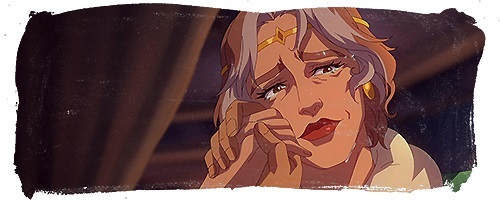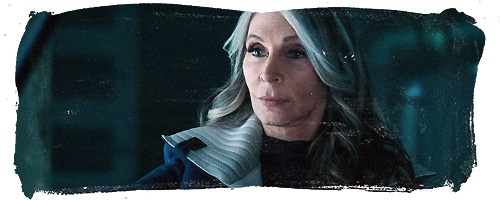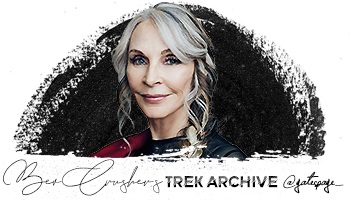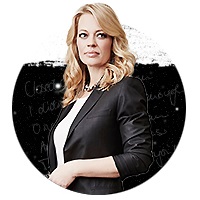
Daniel Rasmus
May 29, 2017

Silicon Valley Comic Con held a panel to celebrate the 30th anniversary of Star Trek: The Next Generation (TNG) this spring in San Jose’s historic City National Civic theater. At this panel the near-capacity crowd, siphoned from the Con’s 65,000 attendees, could confess their adoration, ask questions and spend time with the actors who portrayed their beloved TNG characters. It was very clear that after 30 years, TNG remains an inspiration to many, personally and professionally.
Star Trek: TNG, which debuted on Sept. 28, 1987, ran for seven seasons. After the success of movies based on the original Star Trek, Paramount brought back the iconic series to continue not only the voyages of the Starship Enterprise, but to channel the intellect and passion of its creator, Gene Roddenberry—and a host of talented professionals who helped him shape and realize that vision. Like the original, TNG combined technological speculation with exploration of the human condition.
While the entire cast did not attend the Silicon Valley Comic Con panel, the breadth of the show’s various vectors was well-represented by those on stage. From artificial intelligence and robotics, to medicine and management, the actors embodied the major themes Star Trek explored long before they came to impact our lives. That a 30-year-old television show continues to inspire engineers and software developers, cosmologists and physicians, even philosophers and management professionals, attests to its continued relevance.
The first speaker to the public microphone, and perhaps the most passionate, started the morning session: “I’m here to state a fact of how all these wonderful people on stage changed our lives. … I want you to know, and I’ve waited a long time for this, my name is Kevin Gaunt, I am a radiation therapist for the Palo Alto Medical Foundation. I treat 20 or 30 patients a day using a linear accelerator to try to save their lives. And while I do that I tell them about William Shatner. I tell them about Jonathan Frakes. I tell them about all you guys…I am here because of the influence through your characters that you have given me.”
For many avid fans like Kevin, each actor portrayed a character that symbolized some form of hope, fear or possibility. Here’s my take on what the characters mean today.
Dr. Beverly Crusher.Medicine in Star Trek always pushed the limits of sensor technology. From converted commissary salt shakers that pretended to scan bodies, to beds that displayed a constant stream of vital data, Star Trek always pushed technology’s ability to probe and repair physical bodies in ever less-intrusive ways. The most recent example of TNG’s influence comes in the form of DxtER from Basil Leaf Technologies, the recent winner of the Qualcomm Tricorder XPRIZE. The prototype device was designed to diagnose illnesses and monitor the health of people in their homes. Like Dr. Crusher’s instruments, DxtER employs non-invasive sensors, custom-designed to collect data about body chemistry, biological functions and vital signs. Artificial intelligence, informed by years of clinical emergency medicine experience and data, rapidly assesses the user’s state of health. While the device won’t differentiate between species, the prototype clearly demonstrates the value of non-invasive techniques, and the power of fiction to inspire real solutions.
Thirty years later, and more than 50 years after the debut of the original show, Roddenberry’s vision continues to ask humans to boldly go. That is the important point. All else is commentary.
_Star_Trek_The_Cruise_VII_-_--Star_Trek_PICARD--_Panel/001_by_StarTrekCOM.jpg)
_Star_Trek_The_Cruise_VII_-_The_Crusher_Family_Comedy_Hour/001_by_StarTrekCOM.jpg)
_Star_Trek_The_Cruise_VII_-_--Star_Trek_TNG--_Panel/002_by_StarTrekCOM.jpg)
_Star_Trek_The_Cruise_VII_-_--Star_Trek_TNG--_Panel/001_by_StarTrekCOM.jpg)
_Missouri_Comic_Con_-_Panel_with_Gates_McFadden_Michelle_Hurd_Todd_Stashwick/003_donated_by_Jen_Row.jpg)
_Missouri_Comic_Con_-_Panel_with_Gates_McFadden_Michelle_Hurd_Todd_Stashwick/004_donated_by_Jen_Row.jpg)
_Missouri_Comic_Con_-_Panel_with_Gates_McFadden_Michelle_Hurd_Todd_Stashwick/001_donated_by_Jen_Row.jpg)
_Missouri_Comic_Con_-_Panel_with_Gates_McFadden_Michelle_Hurd_Todd_Stashwick/002_donated_by_Jen_Row.jpg)













